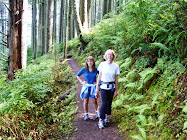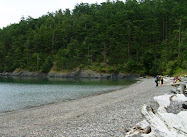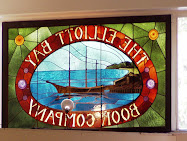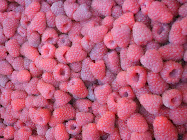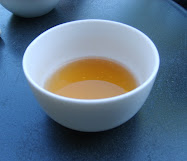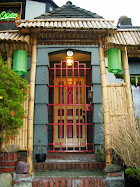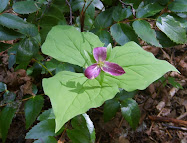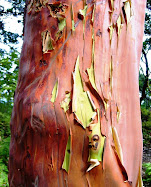As I've progressed along the trail of life, I've lost more family and friends the last few years. I'd like to express my gratitude for the life of my good friend Don. He passed suddenly in September, and his lack of physical presence leaves a void in my life.
 | |
| At Twin Falls on a very rainy hike with Don |
Don and I worked together back in the early 2000s and continued our friendship beyond co-workers. Together with another friend, we were founding members of the "Sunday Morning Church of Tea" at Miro Tea in Ballard, where we had relaxing conversation about the week just passed while sipping fine tea. Don was a reserved but very smart, kind man. He was also a font of information, active in the state and national American Society of Landscape Architects, and raved about the tamales and chiles he grew up eating in Taos, New Mexico. (He even shot pool with Dennis Hopper when he was a teenager in Taos.)
If you follow Pacific Northwest Seasons on Instagram or FaceBook, you might have noticed more mushroom photos the last couple years. I'm grateful for the abundant and varied fungi that grow here in western Washington. I find them endlessly photogenic, intriguing, and weirdly wonderful.
 |
| Amanita muscaria, NOT edible but hallucinogenic |
I treasure invites from a good friend to join her for foraging expeditions, seeking chanterelles and morels, each spring and fall. Those trips are a combination treasure hunt, forest bathing, and fun spending time with good people. And of course I can't divulge where we go to forage. :)
It goes without saying (but I'll say it) that I'm so very grateful for friends and family. So this year I'll mention my gratitude for my formerly feral cat Mittens, also known as Yuki. I can't believe she's still with us at 17 going on 18, after 10+ years surviving outside with her colony dodging coyotes, cars, raccoons, cold snaps, and who knows what else.
I actually thought I was losing her just a couple days ago, but once again she has bounced back from an IBD flare-up, but for who knows how long. All I can do is try and appreciate each moment of kitty kisses, being trapped with her purring on my lap, and her general spicy character that makes me laugh. There's even a Team Mittens group of friends who help me hold her when she gets her daily meds.
As always, I'm grateful for my home region, where I've lived all but 4 years of my life. The Pacific Northwest, specifically western Washington and Oregon, is deep in my bones. Some of my ancestors landed and settled in Seattle in the 1860s, which I realize is not that long ago compared to the Coast Salish peoples who have lived here for thousands of years.
With humanity's excesses, our remaining forests, rivers, lakes, and the sea, for which I'm so grateful, are suffering. I urge us all to be as conscientious as possible about our driving, buying habits, and general consumption to lessen the impacts of these changes while there's still (?) time to minimize the worst effects of a changing climate and plastic pollution in our oceans.
I could ramble on more about gratitude (swimming in the Salish Sea, skiing and hiking with good friends in the Cascades, farmers markets, my two book clubs, my Zen community, good tea, kind people, etc.). But who reads long blogs anymore? (Thank you to the few of you who do.)
Happy holidays, and may this post spur you to also think about your current list of things for which you're grateful. If you feel so inclined, I would love to hear about some of your gratitude list in a comment below.
Happy trails and thanks for visiting Pacific Northwest Seasons! In between blog posts, visit Pacific NW Seasons on FaceBook, Twitter, and Instagram for more Northwest photos and outdoors news.









.JPG)
















